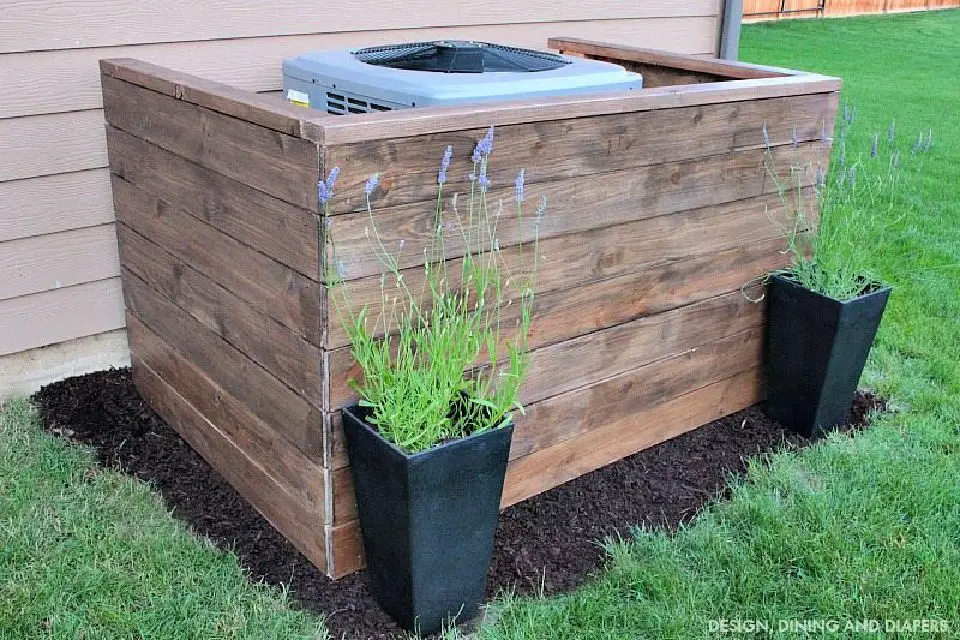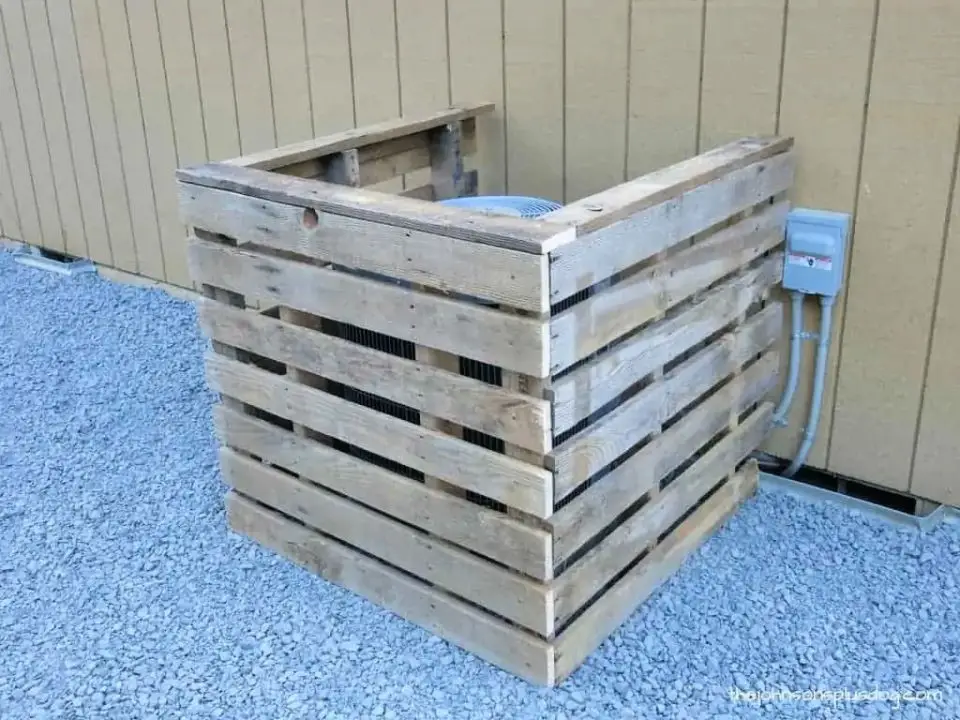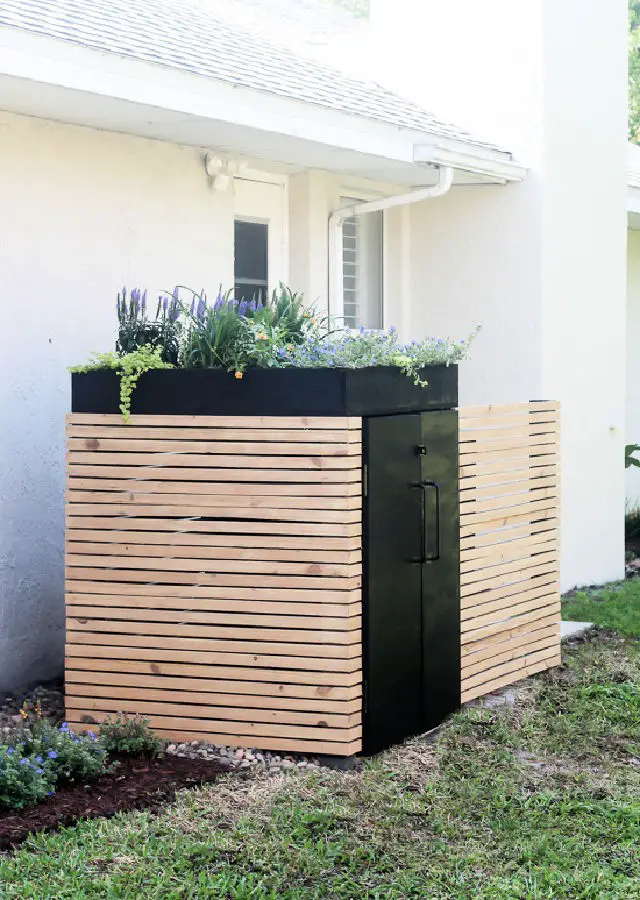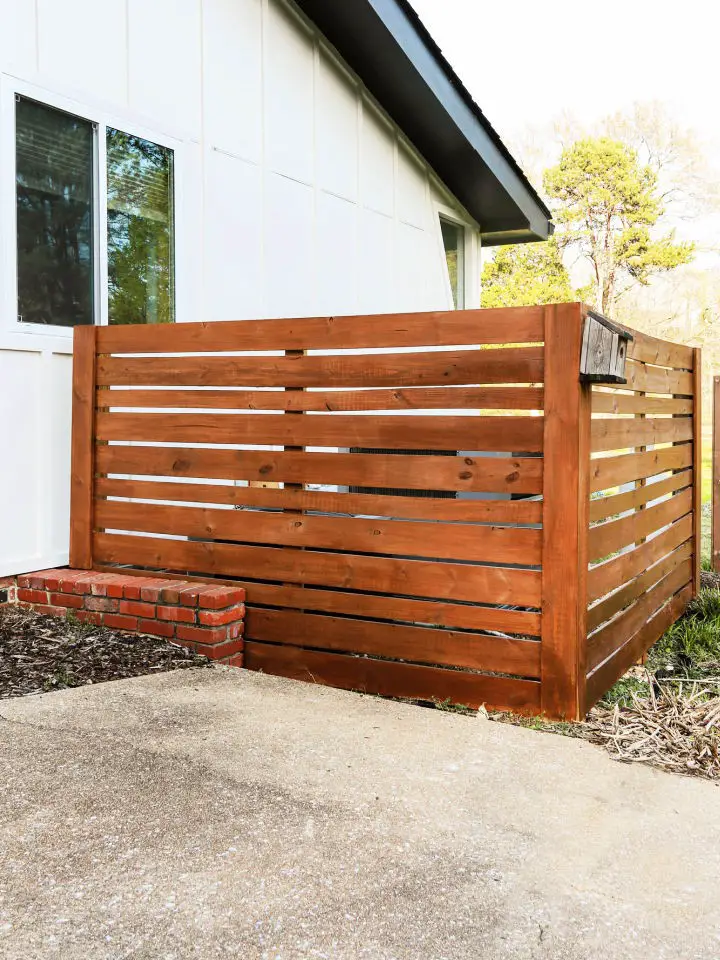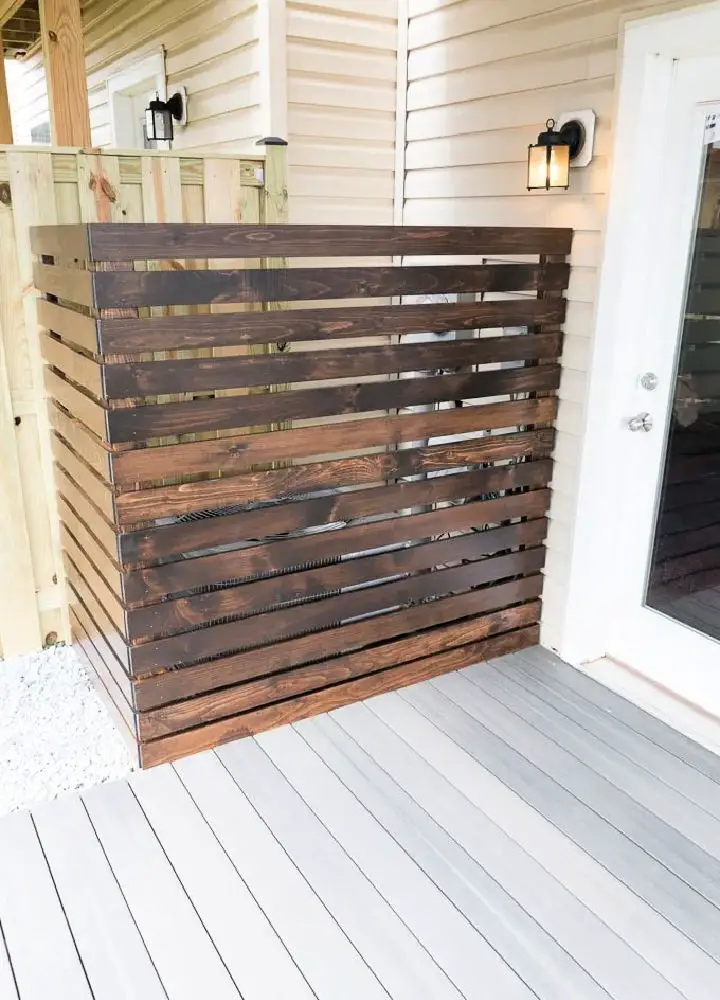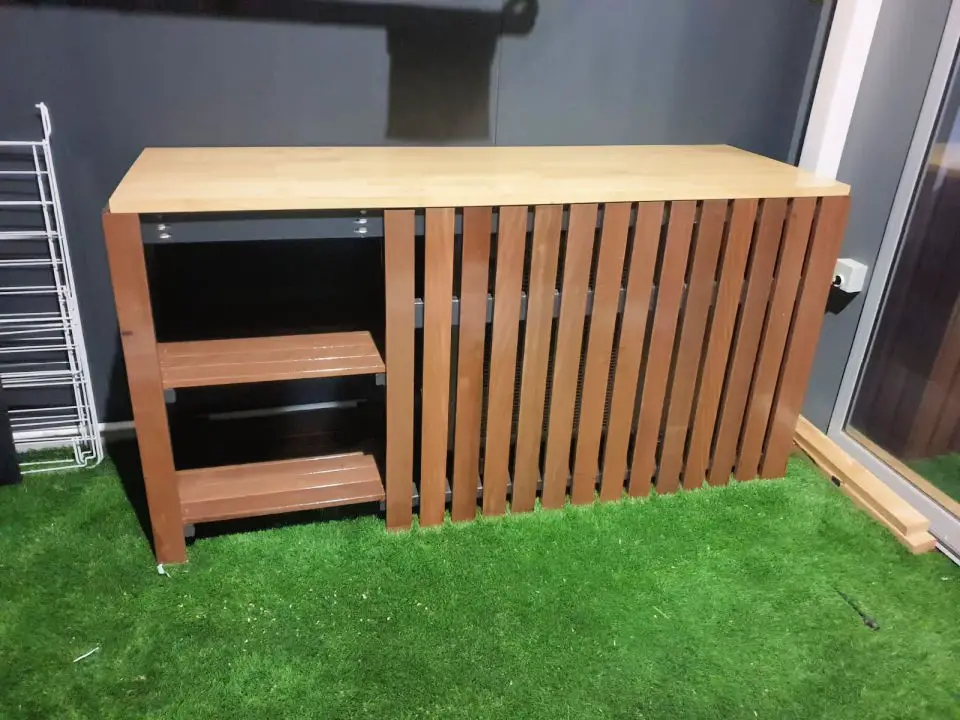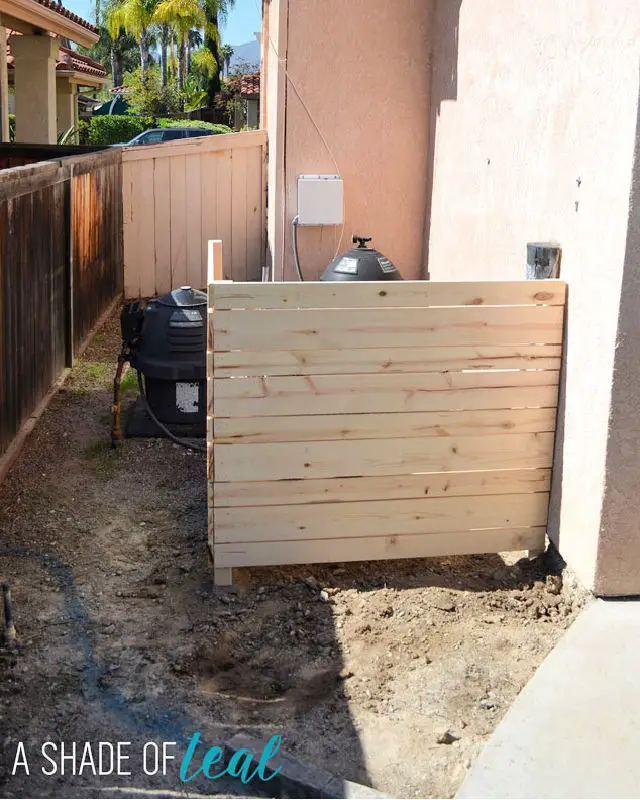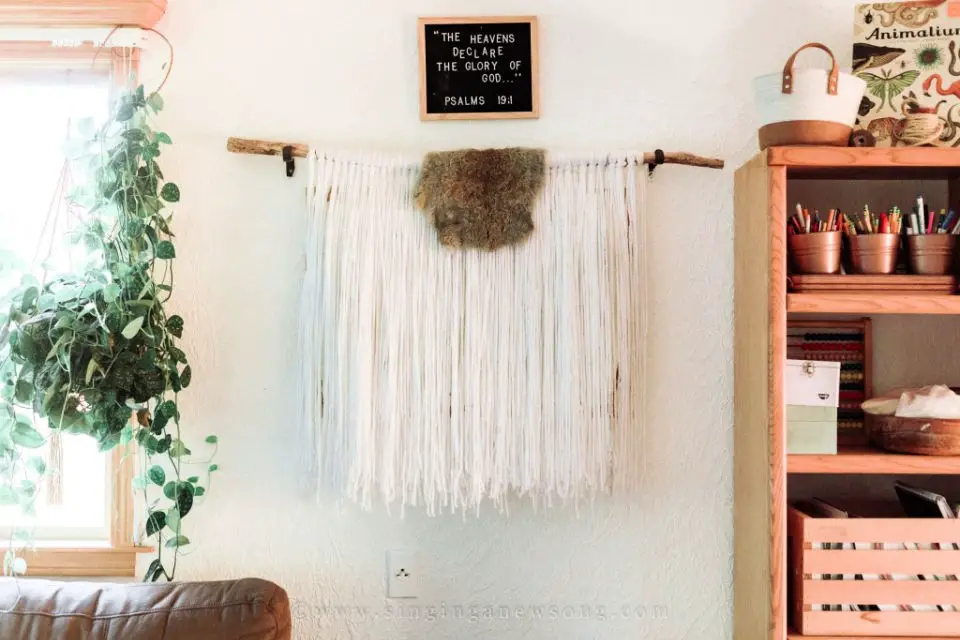
Get ready to beat the heat with our extensive guide to crafting unique and functional DIY air conditioner covers. In this comprehensive article, we’ll delve into the world of customization, exploring theme-based designs, vibrant colors, and innovative functional additions that will make your AC cover truly one-of-a-kind. But that’s not all – we’ll also dive into the realm of energy efficiency, highlighting clever ways to protect your unit from the elements, boost insulation, and ensure proper ventilation. And because safety always comes first, we’ll provide essential precautions, maintenance tips, and storage solutions to guarantee your DIY masterpiece stays in top shape for years to come.
How to Make Air Conditioner Cover – Step by Step Guide
To keep your space comfortable and stylish, creating a custom air conditioner cover is a simple DIY project that can be completed in no time. Here’s a straightforward guide to help you get started.
Materials and Tools Needed
To embark on this outdoor project, you’ll need to gather the following essential materials: first and foremost, sturdy lumber in 1×4 and 1×2 dimensions. Next, ensure you have a reliable exterior-grade paint to protect your structure from the elements. In addition, don’t forget screws for assembling the frame, as well as a pocket hole jig to make those tricky joints easier to manage. A trusty drill will also come in handy, along with either a circular saw or table saw for cutting larger pieces of wood to size. Furthermore, you’ll want to have a staple gun on hand to secure any fabric or material that will be used for screening purposes. Once your frame is built, it’s time to choose the perfect outdoor screen material to filter out unwanted sunlight and pests. To reinforce your structure, galvanized plates can provide added stability, while PVC material with a groove will help ensure watertight seals where necessary. Finally, don’t overlook the importance of lattice, which will add visual interest and texture to your finished project. If you’re planning to install your screen in an area prone to lightning strikes or other electrical threats, be sure to include grounding rods to keep everyone safe.
Step-by-Step Guide
Step 1: Prepare Your Wooden Pieces
Cut the necessary 1×4 and 1×2 lumber pieces to size using either your trusty circular saw or reliable table saw. Ensure accurate measurements for a sturdy frame construction, as precise cutting is crucial for this stage.
Step 2: Assemble Frame with Pocket Holes
To create a sturdy framework, it’s essential to drill precise pocket holes that will securely connect the frame components. When it comes to fastening these parts together, opt for outdoor-specific wood glue and screws designed to withstand harsh weather conditions. A crucial step is ensuring the frame remains square throughout the process, allowing any excess moisture to evaporate completely before proceeding with further construction.
Step 3: Paint the Frame
When it comes to protecting your frame and giving it a polished appearance, applying exterior-grade paint is a crucial step. Not only does it provide an additional barrier against the elements, but it also gives your cover a sleek and finished look. To ensure a lasting result, make sure to allow the paint to dry completely before moving forward.
Step 4: Attach Screening
To get started with setting up your outdoor screening equipment, first make sure you have cut your screen material to the correct size, tailored specifically to fit within the confines of your frame. Next, utilize a reliable staple gun to securely attach the screen to its respective frame, taking care to pull it taut and avoid any unwanted sagging or creasing. By doing so, you’ll be able to ensure a crisp and clear viewing experience for all attendees.
Step 5: Prepare and Attach Decorative Elements
To give your project a professional finish, begin by cutting the PVC material and lattice into precise pieces that match the outer dimensions of your frame. Take care to round off any sharp edges to ensure a safe and smooth handling experience. Once prepared, attach the PVC material to the top and bottom of the frame, serving as both an aesthetically pleasing touch and providing supplementary support for the lattice structure.
Step 6: Install the Cover
To ensure a sturdy installation and keep your cover raised off the ground, consider repurposing cut sections of grounding rods as stabilizers. Simply hammer these rods into the earth, then utilize their built-in brackets to securely fasten your cover in place.
Step 7: Final Touches
To complete the installation process for your air conditioner cover, consider adding a few finishing touches. This may include securing any loose parts with screws, clips, or adhesive to prevent damage or detachment over time. Additionally, you can adjust the fit of the cover to ensure it is snug and evenly distributed around the unit. For aesthetic purposes, you can also add decorative elements such as trim, molding, or paint to match your home’s interior design. The goal is to create a cohesive and visually appealing installation that effectively hides the air conditioner while maintaining its intended functionality.
Safety Tips
To guarantee a safe and efficient DIY experience, it’s crucial to take precautions from the start. When operating power tools or handling sharp materials, always don your protective gear – including gloves and safety glasses. This simple step can significantly reduce the risk of injury.Before cutting any materials, double-check your measurements to avoid waste and ensure a precise fit. This attention to detail will not only save you time but also minimize the likelihood of costly mistakes down the line.When tackling painting projects, remember to work in a well-ventilated area to prevent inhaling fumes. By taking these basic precautions, you’ll be able to complete your tasks with confidence and minimal risk to your health.
Maintenance
To ensure the longevity of your air conditioner’s cover, it’s crucial to perform routine inspections for signs of wear or damage. Upon identifying any imperfections, consider reapplying a new coat of paint to preserve the cover’s protective barrier.
Video Tutorial
To enhance your understanding of creating an outdoor air conditioner cover, we recommend supplementing this written guide with a step-by-step video tutorial. Specifically, the accompanying YouTube video provides a visual representation of the techniques outlined here, making it easier to grasp the concepts and follow along.
Customization Ideas for Your DIY Air Conditioner Cover
Transforming your DIY air conditioner cover into a design statement that not only shields your unit from the elements, but also elevates the visual appeal of your outdoor area. To inject personality into your project, consider these innovative approaches:
Choose a Theme
When choosing an interior design theme for your home, it’s essential to consider how it will harmonize with the exterior architecture. Consider your home’s style – is it sleek and modern, rustic and charming, or tropical and vibrant? Let this theme serve as a guiding force in selecting materials and incorporating design elements that create a cohesive look.
Paint and Color
Adding a pop of personality to your air conditioner (AC) cover is just as important as its functional role. One way to do so is by incorporating bold colors that not only contrast with your home’s aesthetic but also complement it. This small design choice can instantly transform the AC cover from an afterthought to a standout feature in your room.
If you’re feeling artistic, take it up a notch by painting a mural or pattern on your cover. This unique touch will not only make your AC cover a focal point but also reflect your personality and personal style.
Incorporate Nature
Elevate your outdoor space with a unique fusion of functionality and aesthetics by incorporating vertical gardens into your design. By attaching planters to the sides of your cover, you can grow vines or flowers, creating a dynamic, living art piece that adds visual interest and freshness to the area.
To add warmth and organic charm, incorporate natural wood elements into your design. Staining or sealing the wood helps preserve its beauty and longevity, while also providing a cozy contrast to the surrounding landscape.
Functional Additions
One way to enhance your gazebo’s functionality is by utilizing its built-in storage capabilities. Consider adding shelves or hooks along the sides of your cover to store garden tools, decorative items, or even plants. This will not only keep your belongings organized but also free up space elsewhere in your yard.
In addition to storage, lighting can greatly impact the ambiance and usability of your gazebo. Solar-powered LED lights are an excellent choice for pathways and nighttime gatherings. Not only do they provide a warm glow, but they’re also energy-efficient and environmentally friendly.
Seasonal Decor
Designing a versatile and adaptable cover is possible by incorporating interchangeable panels. These panels can be easily swapped out to reflect different seasons, holidays, or even personal preferences. Furthermore, consider adding removable decorative elements like wreaths or string lights to give your cover an extra touch of festivity. With these features, you’ll have the freedom to express yourself creatively and adapt your design to suit various occasions.
Enhancing Energy Efficiency with Your DIY Air Conditioner Cover
A well-designed air conditioner cover serves as more than just a shield against the elements. It’s a clever strategy to enhance energy efficiency, too. Specifically, a thoughtful cover can optimize performance in several ways.
Protecting from the Elements
When it comes to maintaining your air conditioning unit, two crucial factors to consider are shielding from debris and weather resistance. Debris covers prevent leaves, twigs, and other obstructions from entering your unit, allowing it to operate efficiently without clogging or malfunctioning. On the flip side, a cover can also shield your AC from harsh weather conditions such as strong winds, heavy rain, or scorching sun, thereby reducing the risk of damage and inefficiency.
Insulation Benefits
The AC unit’s temperature regulation is significantly enhanced by properly insulated covers, which enable it to operate efficiently while minimizing its energy consumption. By maintaining a stable temperature environment, these covers reduce the workload on the AC system, ultimately leading to a more consistent cooling performance.
Ventilation is Key
To maintain optimal performance and efficiency, it’s crucial to ensure your air conditioning (AC) system has sufficient ventilation. One common pitfall is allowing the unit to overheat due to inadequate airflow. This not only wastes energy but also reduces the lifespan of your AC. Make sure to leave enough space around the unit for proper airflow, as this will help prevent overheating and keep your cooling costs in check.
Safety Considerations for Your DIY Air Conditioner Cover
When it comes to building and installing a DIY cover, prioritizing safety should be at the forefront of your mind. To ensure a secure and stress-free experience, consider the following key takeaways:
Ensuring Proper Airflow
When designing your air conditioning system, it’s essential to prioritize ventilation as a crucial component. The purpose of proper ventilation is to ensure that your AC unit doesn’t overheat due to inadequate airflow. A well-designed ventilation system will allow for sufficient air circulation, preventing excessive heat buildup and maintaining optimal operating temperatures.
Material Safety
When selecting materials for your project or facility, prioritize non-flammable options to mitigate the risk of fires. This crucial step in fire safety ensures a safer environment by reducing the likelihood of ignition and subsequent damage.
Installation Precautions
To ensure the safety and practicality of your outdoor furniture cover, prioritize two crucial factors: secure attachment and accessibility. Firstly, guarantee that your cover is firmly attached to prevent it from becoming a hazard in windy conditions or when used during strong gusts. This simple yet vital step can significantly reduce the risk of accidents or damage. Secondly, design your cover with easy removal in mind, allowing for effortless maintenance, repair, or emergency situations. A well-designed cover should strike a balance between security and convenience.
Maintenance Tips for Your DIY Air Conditioner Cover
To get the most out of your DIY air conditioner cover, it’s crucial to keep it well-maintained. This not only extends its lifespan but also preserves the overall performance of your AC system. To achieve this, follow these simple steps:
Regular Cleaning
For optimal cleaning results, start by gently scrubbing the cover using a soft cloth or sponge and a mild soap solution diluted with water. It’s crucial to avoid harsh chemicals that can compromise the material’s integrity. Once you’ve removed any dirt or debris, thoroughly rinse the cover to eliminate any remaining soap residue that might attract new dirt particles.
Inspecting for Damage
Regularly examine the exterior of your cover for signs of wear and tear, including rips, loose attachments, or other forms of damage. Address these issues right away to ensure the integrity of your cover remains intact. Additionally, inspect for any weather-related damage, such as cracks or holes caused by hail, high winds, or extreme temperatures, and implement measures to mitigate similar occurrences in the future.
Seasonal Care
When winter’s chill sets in, residents of regions with severe cold should take precautions to safeguard their covers. A wise move would be to add extra insulation to prevent heat loss or store it away for the off-season to avoid damage. Conversely, as summer approaches, it’s crucial to prepare your cover for the hot weather by giving it a thorough cleaning and removing any blockages that might impede airflow.
Storage Solutions
To ensure the longevity of your cover, it’s essential to store it properly when not in use. Ideally, this should be done in a dry, cool environment that is free from moisture and humidity, thereby preventing mold and mildew growth. When storing, take care to fold the material carefully, avoiding any creases or wrinkles that could compromise its shape and functionality. A neat and deliberate folding process will help maintain the cover’s overall integrity.
FAQs About DIY Air Conditioner Covers
As you embark on a DIY endeavor such as crafting an air conditioner cover, it’s only normal to experience uncertainty. To alleviate any concerns, let’s delve into some frequently asked questions and provide clarity on the process.
What materials are best for an air conditioner cover?
When selecting materials for your outdoor furniture, prioritize durability and ventilation. Opt for options that can withstand the elements, such as vinyl, aluminum, or breathable polyester fabrics. These choices will ensure your furniture remains resilient against weather conditions while also promoting airflow to keep you cool and comfortable.
How do I measure my air conditioner for a cover?
When it comes to measuring for a custom fit, start by accurately determining the height, width, and depth of your unit. To avoid any potential issues with a snug-fitting cover, consider adding a small margin of error – about an extra inch or so – to ensure a comfortable and secure fit.
Can I use my AC cover all year round?
When in use, it’s recommended to retract the cover during the air conditioning system’s active periods. This helps prevent overheating and ensures optimal performance by allowing for proper airflow.
How do I ensure the cover doesn’t block airflow?
When crafting a functional and comfortable outdoor space, it’s essential to incorporate thoughtful design considerations that promote airflow. One effective way to achieve this is by strategically incorporating vents or mesh panels into your design. These subtle yet crucial elements allow for proper air circulation, which can significantly enhance the overall user experience. By prioritizing breathability and ventilation, you’ll create an inviting atmosphere that encourages relaxation and enjoyment.
Is it safe to have a cover on my air conditioner?
When it comes to designing a cover for your safety-first approach, it’s crucial to ensure that it does not compromise ventilation or pose a fire hazard. To achieve this, opt for materials that are inherently non-flammable, such as those used in firefighting gear. By prioritizing safety and carefully considering the design of your cover, you can create a solution that effectively protects without compromising vital airflow or introducing potential risks.
How can I customize my AC cover to match my home?
When it comes to designing a bookshelf that reflects your personal taste and complements your home’s unique character, aesthetic choices play a crucial role. This can be achieved by painting the cover with a color that resonates with your home’s style or adding decorative elements that echo its architectural features. Additionally, selecting materials that harmonize with the overall aesthetic of your space is also essential in creating a cohesive look.
Will a cover protect my AC from rain and snow?
A waterproof cover is essential for protecting your air conditioner from inclement weather, but don’t forget about breathability. A cover that allows for airflow can help prevent condensation buildup, which can lead to mold and other issues.
20 Easy DIY Air Conditioner Cover Ideas
Transform your outdoor AC unit into a design statement with these 20 innovative and accessible DIY air conditioner cover ideas, suitable for every skill level.
How to Build an Air Conditioner Enclosure
Transform your outdoor space by creating a DIY air conditioner enclosure that not only hides the unsightly exterior of your home’s AC unit but also enhances its curb appeal. This comprehensive guide walks you through the process, providing a step-by-step approach to building the perfect cover. From gathering necessary materials like fence posts, boards, Quikrete, galvanized fence nails, wood stain, sealer, weed barrier, and decorative filler, to executing the instructions that involve removing grass around the AC unit, digging holes for the posts, setting them with Quikrete, staining the boards, and attaching them to create the cover, this project is fully customizable based on the size of your AC unit. The finished result boasts a polished look that can elevate your backyard’s overall aesthetic.
DIY Pallet Wood Air Conditioner Cover
Transform your unsightly air conditioning unit into a stylish focal point with a DIY pallet cover that’s both easy on the wallet and quick to make. In just 45 minutes, you can create a unique and attractive cover using only three pallets and basic tools. Begin by cutting the front pallet to size, then remove some backboards and pry out rusty nails. Next, cut the side pallets to fit and secure them to the front piece with wood screws. For added support and a finishing touch, attach optional top trim pieces to complete your project. This frugal solution requires minimal effort and materials, making it an ideal way to boost curb appeal without breaking the bank.
How to Make a Stylish AC Screen Cover
Stay stylish this season by transforming an unsightly area into a beautiful outdoor feature with a DIY AC screen cover. Without breaking out the heavy machinery or getting covered in concrete, you can create a stunning wood screen that conceals unwanted views while still allowing for airflow and easy access. This comprehensive guide will walk you through the simple process of constructing and installing an AC screen using cedar wood and Simpson Strong-Tie E-Z Spike fence post spikes. With these easy-to-use tools, you’ll be able to turn an eyesore into a charming addition to your outdoor space that complements your home’s unique style.
Modern DIY AC Unit Cover Idea
Transform your air conditioner into a stylish focal point by creating a modern DIY cover that incorporates a convenient trash can storage area and a charming cut flower garden. This comprehensive guide will walk you through the process of building the cover using readily available materials like 4×4 posts, 1×2 boards, outdoor paint, stain, plywood, and essential tools.
By leveraging the HomeRight Super Finish Max Paint Sprayer to stain wooden slats, you’ll not only save time but also achieve a professional-looking finish. With clear visual aids and expert tips, this project empowers you to conceal your AC unit, keep your trash can organized, and elevate your home’s curb appeal with ease.
Build an AC Unit Cover With Garbage Can Storage
Transform your outdoor space by concealing unsightly air conditioner units and trash cans with a simple, cost-effective DIY project. By upcycling treated pine boards into a fence cover, you can effortlessly breathe easy knowing that your eyesores are hidden from view.
In just one day’s work and for under $200 in materials, you can elevate your home’s curb appeal and revamp your outdoor area. This comprehensive guide outlines the essential tools and materials needed, as well as step-by-step instructions for installing the fence cover. As a result, you’ll be able to bask in the joy of a visually pleasing outdoor environment that enhances the aesthetic of your home.
Affordable DIY Air Conditioner Screen
Create a refreshing oasis without breaking a sweat with this easy DIY air conditioner screen. Hiding your outdoor unit has never been easier! This comprehensive guide will walk you through the process of building a custom screen that’s both visually appealing and functional.
To create your masterpiece, gather materials like 2x4s, 1x4s, an orbital sander, saw, finish nailer, construction adhesive, wood stain, and pocket hole screws.
Start by measuring and cutting the lumber to the correct dimensions. Then, use the orbital sander to smooth out any rough edges. Finish off the screen with a coat of wood stain to give it a natural look. Next, assemble the L-shaped structure, leaving enough space for proper air circulation around the unit.
With helpful tips and placement considerations, this project is the perfect solution for homeowners looking to conceal unsightly AC units while maintaining their functionality.
Handmade Outdoor Air Conditioner Enclosure
Transform your DIY project into an efficient and stylish solution for managing heat with a custom-made air conditioner enclosure. This comprehensive guide will walk you through the process of building a functional, spacious air conditioner cover with built-in storage and seating area. By utilizing H3-treated framing timber, you’ll create a sturdy structure that’s easy to assemble using pocket holes and wood glue. The shelf slats are securely fastened with screws, providing ample clearance for your air conditioner unit while allowing for effortless movement via the addition of wheels. To protect your masterpiece from the elements, finish it off with a water-based and marine-grade gloss varnish. With this versatile enclosure, you’ll be able to control the temperature in your workspace with ease.
Make a Beautiful Wooden AC Cover
Transform your yard’s appearance by concealing your outdoor air conditioner with a charming DIY wooden screen. This weekend project requires only cedar planks and Liquid Nails Fuze*It glue, making it an accessible and budget-friendly endeavor for beginners. Follow the step-by-step guide to cut the pickets, assemble the side panels, apply the adhesive, and secure the posts into the ground. By doing so, you’ll not only hide your AC unit but also add a touch of elegance to your backyard landscape.
Building a Wooden Air Conditioner Cover
Transform the unsightly view of your air conditioning unit or pool equipment with this effortless and removable DIY cover. By combining lumber and a few straightforward steps, you can create a visually appealing cover that hides uninviting machinery. Begin by cutting the lumber to size and arranging the slats in a pattern that suits your style. Secure them in place with nails, ensuring consistent spacing throughout. Next, attach the side slat and posts, constructing a sturdy structure that will effectively conceal the equipment. Once complete, flip it over and position it near its new home. To ensure stability, level the surrounding ground, add blocks for height adjustment, and lay down a weed barrier. This DIY cover not only conceals the equipment but also enhances the overall aesthetic appeal of your outdoor space.
DIY Boho Indoor AC Cover Idea
Transform your home’s ambiance by creating a one-of-a-kind DIY Boho Indoor AC cover. This innovative solution conceals the unsightly unit, replacing it with a vibrant piece of art that reflects your personal style. With just yarn, scissors, and a wooden dowel or stick, you can bring this bohemian-inspired masterpiece to life in under an hour. A comprehensive tutorial provides step-by-step guidance and visual aids to ensure success. The beauty of this project lies in its customizability – choose colors that resonate with your unique aesthetic and add a touch of sophistication to your living space. Bidding farewell to an eyesore, you’ll be left with a stylish air conditioner that harmonizes with your surroundings.
Creative Air Conditioner Cover Out of Wood

Transform your modern air conditioner by creating a louvered condenser and gas meter screen with this comprehensive DIY guide. The tutorial will walk you through building a removable cover that ensures proper airflow to the unit while providing easy access. Constructed using 4″x4″ Douglas fir posts and 1″x6″ pine boards, this project showcases practical construction techniques and offers valuable tips for success. To ensure durability, the materials are treated with oil-based primer and finish coats, protecting against moisture and prolonging the cover’s lifespan. Follow along to build a functional and visually appealing cover that enhances your air conditioner unit.
How to Make an Outdoor Air Conditioner Cover

Transform your unsightly outdoor air conditioner into a stunning centerpiece with this easy DIY project. Rather than letting an eyesore dominate your backyard or garden, why not give it a clever makeover? This informative guide will walk you through the process of creating a customized cover that not only protects your equipment but also elevates the ambiance of your outdoor space. In our comprehensive video tutorial, you’ll receive step-by-step instructions, valuable tips, and expert advice to ensure a top-notch result. So, what are you waiting for? Watch the video now and start turning your drab air conditioning unit into a work of art that will be the envy of all who see it.
Build Your Own Air Conditioner Fence
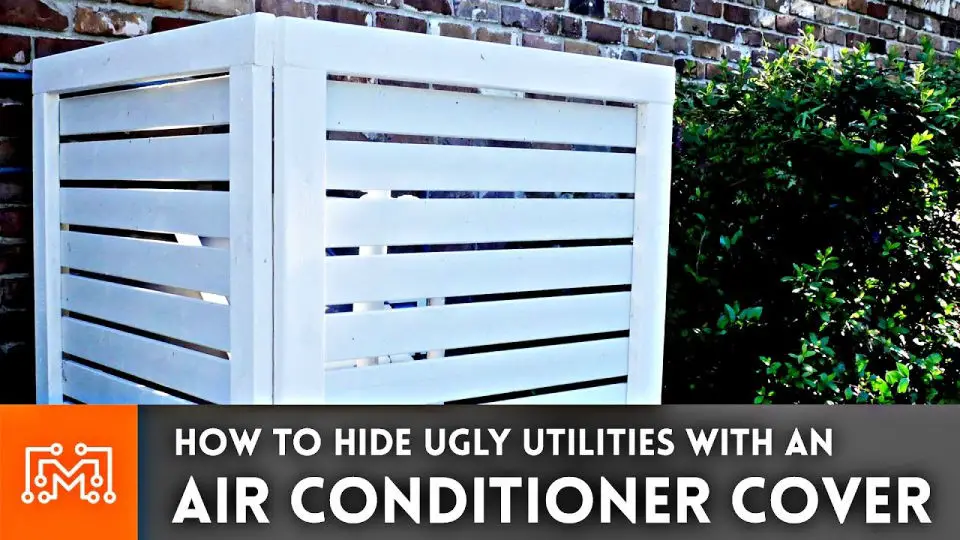
Transform your backyard into an inviting oasis by crafting a DIY air conditioner fence that doubles as a stylish addition. This comprehensive guide will walk you through the process of building a functional and visually appealing cover for your AC unit, using readily available tools like a circular saw, drill driver combo, and compound miter saw. With minimal expertise required, this project is perfect for both seasoned DIY enthusiasts and newcomers alike, allowing you to add a unique touch to your outdoor space with ease.
How to Hide AC Units With Wood

Transform your backyard’s aesthetic appeal by hiding your central air conditioning unit with a unique DIY project. By repurposing pallets and leftover wood, you’ll create a functional cover that not only conceals the AC unit but also provides sufficient ventilation. Follow a step-by-step guide to build a stylish cover that adds a touch of personality to your outdoor space, while also improving its visual appeal.
Budget-Friendly DIY AC Unit Cover
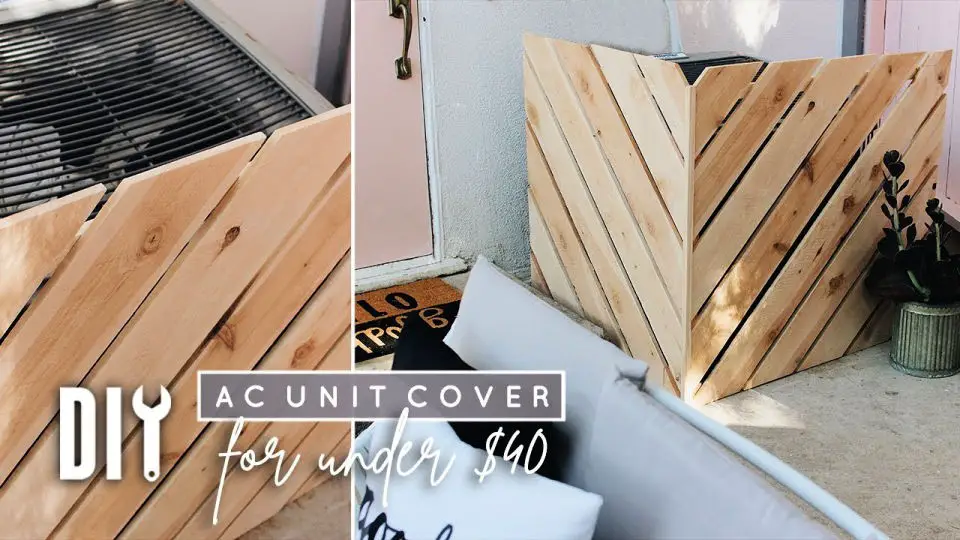
Create a stylish and budget-friendly cover for your DIY air conditioning (AC) unit without breaking the bank. This innovative project requires only a battery-powered miter saw and some basic materials, making it an accessible DIY endeavor. The accompanying video tutorial provides a step-by-step guide on how to craft a custom AC unit cover that can be easily adapted to fit any outdoor space. With a budget-friendly investment of under $40, this practical solution enhances the aesthetic appeal of your outdoor area while protecting your AC unit from the elements. Follow the simple instructions and unleash your DIY creativity today!
Make Your Own Wooden Hvac Cover

Transforming the look of your home’s heating and cooling system is now possible with this DIY wooden HVAC cover. By upcycling leftover materials from a fence and gate construction project, you can create a custom cover that not only functions effectively but also adds a touch of elegance to your outdoor space. The best part? It’s incredibly easy to install and remove as needed. With just a few simple steps and minimal supplies required, you can turn an eyesore into a stylish focal point. Simply follow along with this step-by-step guide and discover how repurposing materials can lead to a beautiful and practical solution for hiding your AC unit.
DIY Air Conditioner Cover With Adjustable Slats
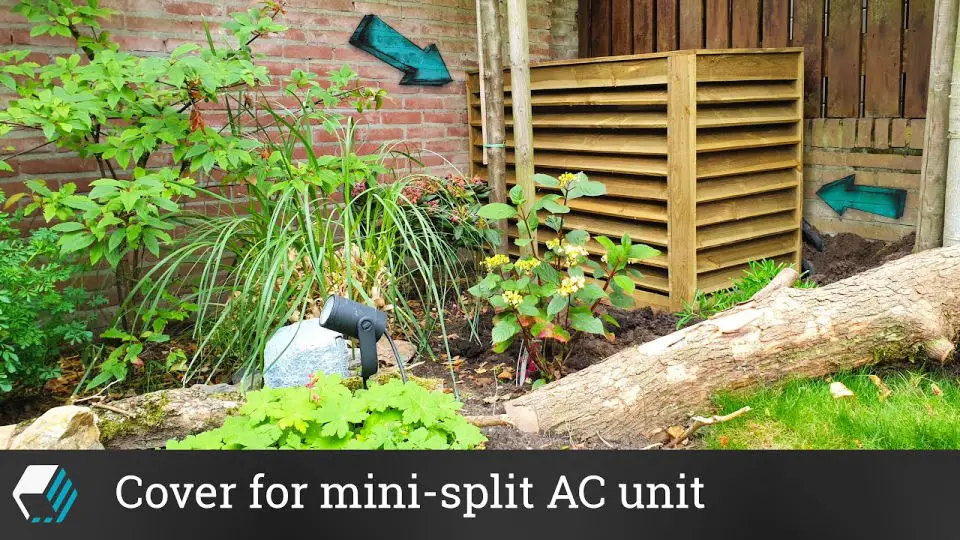
Transform your mini-split air conditioning unit’s appearance with an elegant DIY cover that not only enhances your outdoor space’s visual appeal but also safeguards the device from harsh weather conditions. This accessible project, demonstrated through a step-by-step video tutorial, allows novice woodworkers to effortlessly follow along and create their own adjustable slat cover at home. With treated boards and basic supplies in hand, you’ll be well on your way to completing this fun weekend DIY adventure. As a bonus, the finished product will not only boost your home’s aesthetic appeal but also protect your AC unit from rust and corrosion, ensuring a comfortable outdoor space for years to come.
Lattice Outdoor Air Conditioner Screen
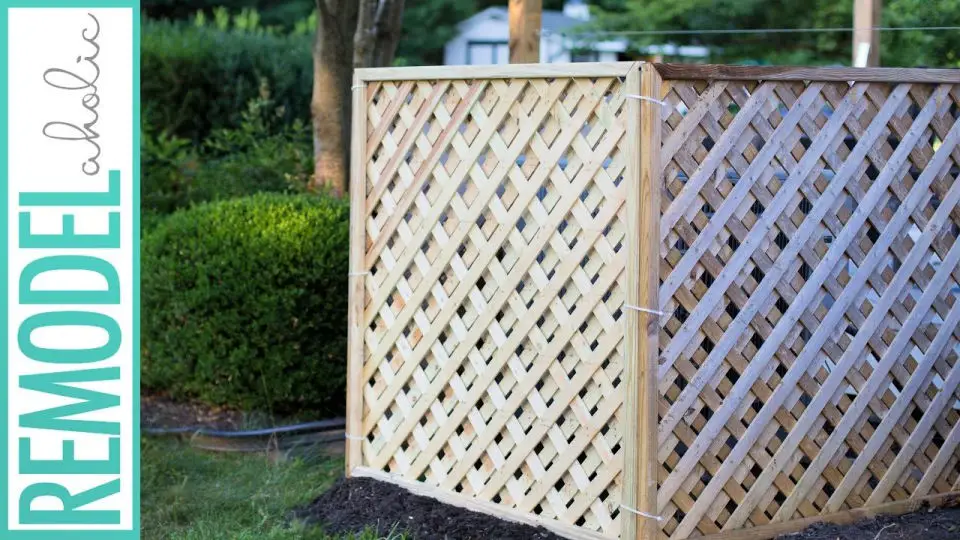
Transform your summer days by creating a DIY lattice screen to conceal your outdoor air conditioner unit! This comprehensive guide provides a step-by-step tutorial, accompanied by photos, to help you hide your AC unit while adding a touch of elegance to your outdoor space. With just a few simple materials – including a lattice, frame, and basic assembly tools – you can bring this creative solution to life. Not only will you be able to maintain the functionality of your AC unit, but you’ll also be able to enhance the overall aesthetic appeal of your outdoor area. Follow along with this guide to get started on this project today and enjoy a cooler, more stylish summer.
Making an Air Conditioner Cover Step by Step
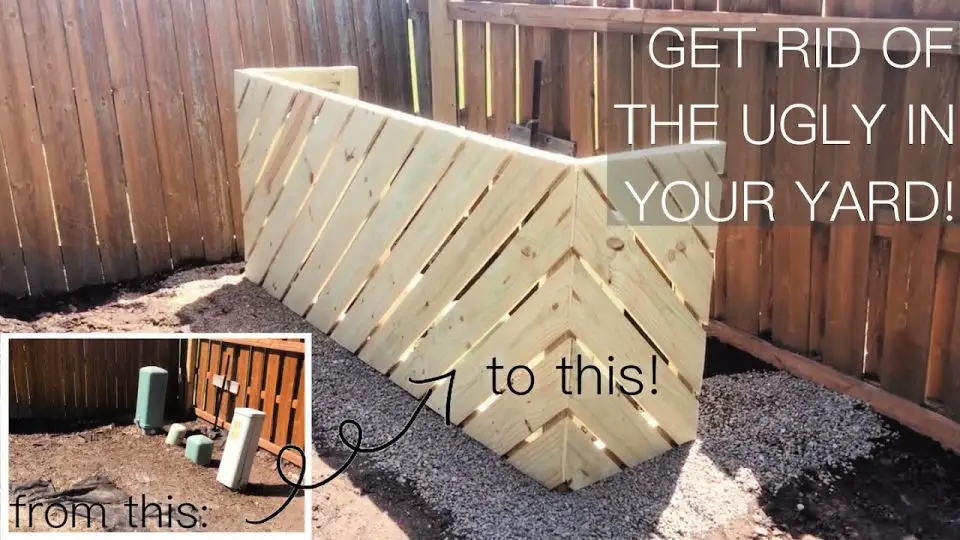
Transforming unsightly outdoor elements like air conditioning units and utility boxes into attractive and functional features is now possible with this DIY cover project. This tutorial serves as a comprehensive guide, providing step-by-step instructions and precise dimensions for the frames and final sizes of the covers. With a focus on ease of execution, you’ll also find a curated list of essential tools to facilitate the process. By concealing these eyesores, you can unlock the potential to create a more visually appealing outdoor space that invites relaxation and enjoyment.
DIY Air Conditioner Cover Less Than $20

Transforming your outdoor space doesn’t have to break the bank. With a DIY air conditioning unit cover that costs under $20, you can give your backyard a stylish makeover without sacrificing functionality. This step-by-step guide provides a clear and concise tutorial on building a practical and attractive cover for your AC unit. By following this project, even beginners can create a unique outdoor space that not only enhances the aesthetic appeal but also protects your A/C unit from the elements. So why not get creative and add some personality to your backyard today?
Conclusion:

As you’ve explored the 20 easy DIY air conditioner cover ideas, it’s time to bring your outdoor space to life with personalized touches. Don’t forget to prioritize energy efficiency and safety by ensuring proper ventilation and using safe materials. To keep your custom cover in top shape, establish a regular maintenance routine that includes cleaning and seasonal care. By considering these tips and frequently asked questions, you’ll be well on your way to creating a functional and stylish air conditioner cover solution that complements your outdoor area.

